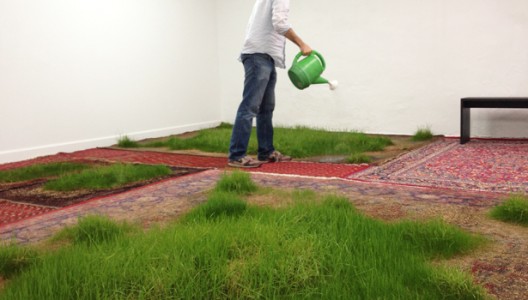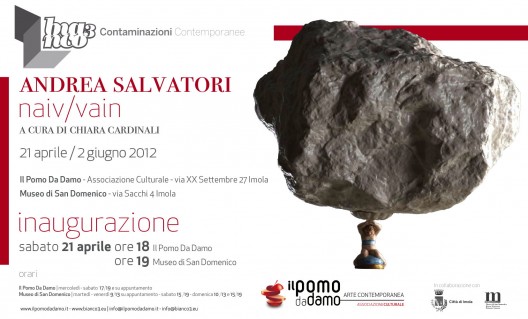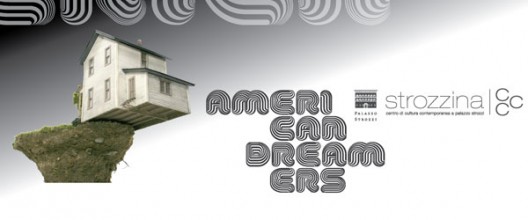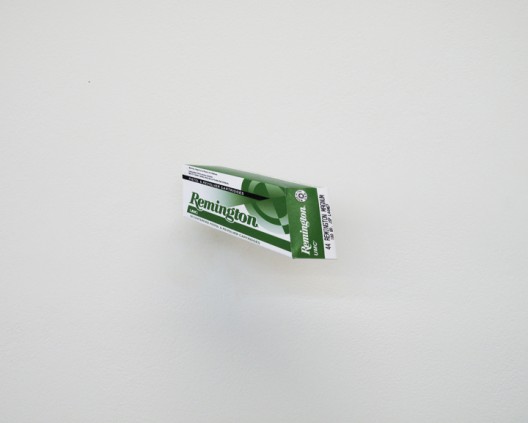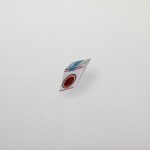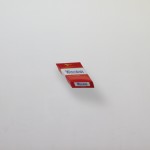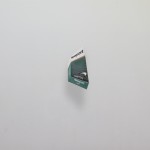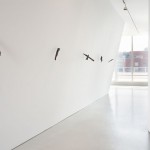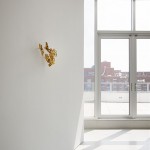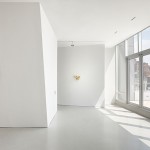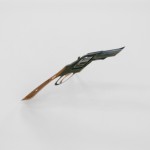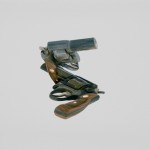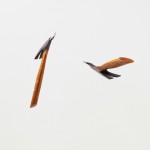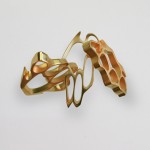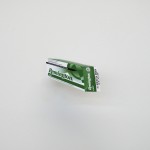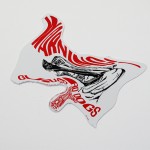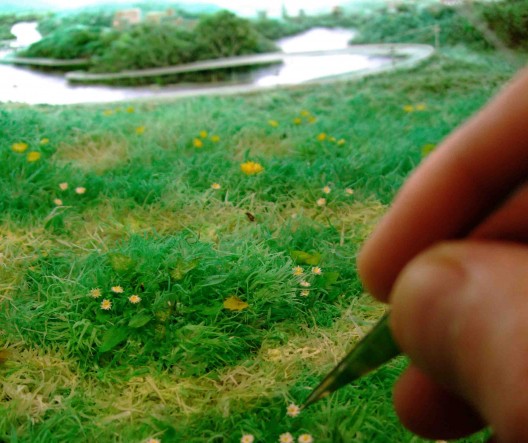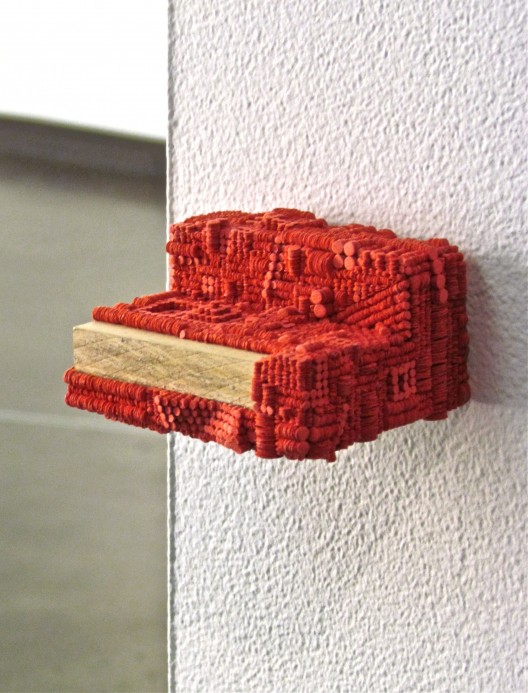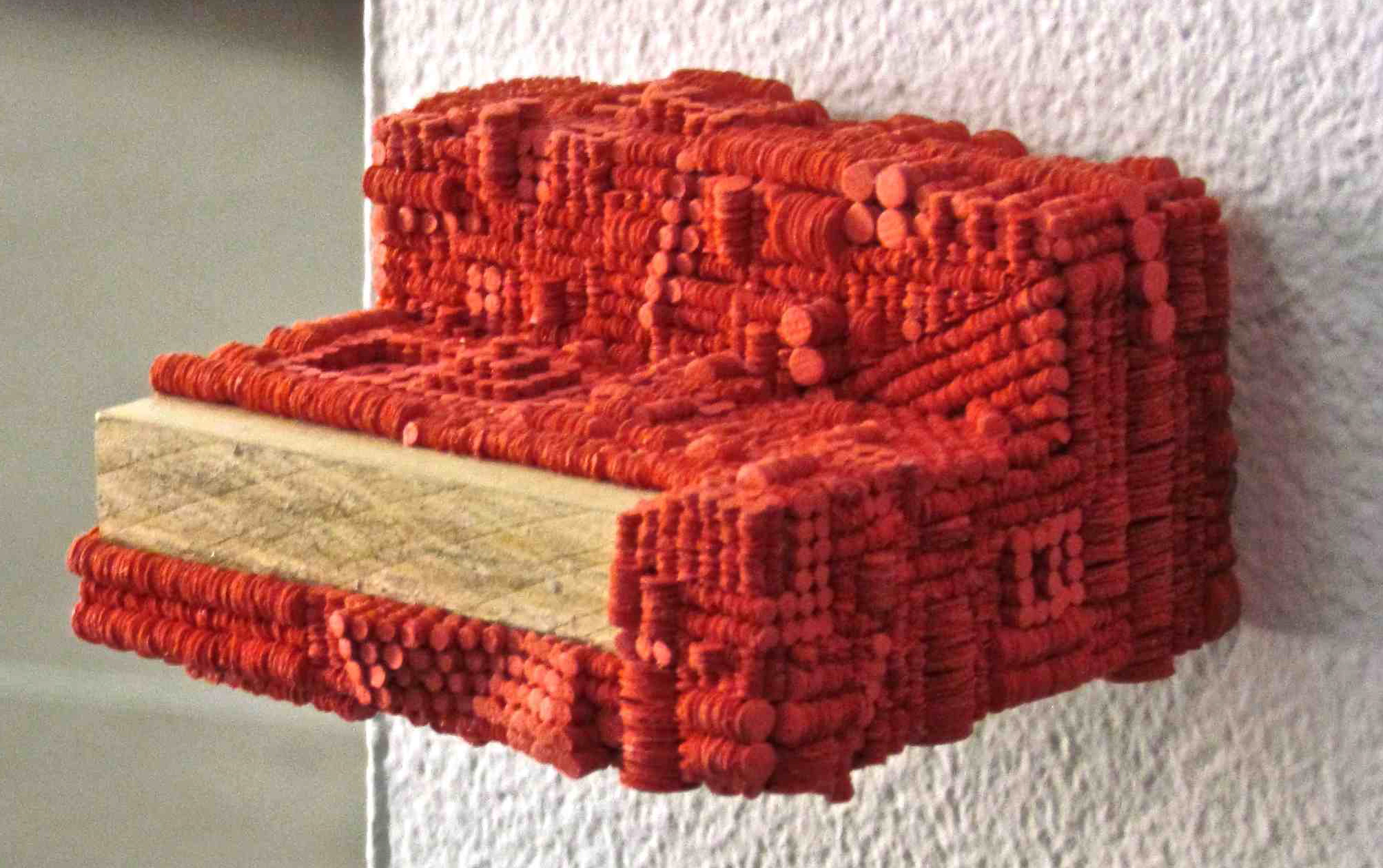‘ORGANIC INTUITIONS’
featuring
Gaia Carboni, Patrick Jacobs, and Martin Roth.
April 16-May 4, 2012
Opening Reception: April 16, at 7 pm
Bolsa de Valores, Mexico D.F.
THE POOL NYC is proud to present “Organic Intuitions”, a group show held at the BOLSA de VALORES, in Mexico City.
The show includes the work of three artists operating worldwide: Patrick Jacobs, an American artist based in New York, Gaia Carboni, an Italian artist based in Faenza, and Martin Roth, an Austrian artist who lives and works in NYC.
Jacobs, Carboni and Roth work on the theme of Nature and its related aspects: this exhibition aims at showing various artistic interpretation and representation of Nature, by using different media and approaches.
Our view of nature, by nature, is always restrained, and any representation will always be a constructed landscape.
Entering into a gallery or a museum often turns out to be a very cold and aseptic experience. More often than not, the outside world is not allowed to cross the border of a gallery or a museum.
We intentionally overcome that boundary separating art and life, and we do that by surprising the viewer welcoming nature into the gallery, and this time into the Mexican Stock Exchange.
The general idea is to present a space with works inspired by nature and focused on the nature itself.
Carbonis works can be paired with Jacobsworks for their concentration on the naturalistic aspect of the world and for their obsessive technique. Carboni is paying attention to the evolution of the object: its the chain of life, as a circle, and everything begins and ends in nature. Carboni represents nature in its constant metamorphosis revealing the profound interconnection within different worlds, either architectonic, organic or vegetal.
Through what appears to be a small window on the wall, Jacobs is taking the viewer to a new reduced world, made of natural components and bizarre details. Patrick Jacobs work blurs perceptual distinctions between painting, photography and constructed reality. Set behind lenses, these foreshortened spaces occupy the hidden architecture of the wall, offering the viewer an encompassing and magical view of the mundane – a backyard overgrown with dandelions, a kitchen linoleum floor pierced by the leg of a stool, a downspout clogged with dead leaves.
Roth is cultivating grass on a peculiar surface: a rug.
Martin Roth creates a situation and that situation inevitably, in the words of the artist, takes on a life on its own. Sometimes this work can be uncanny because it defies expectations and the inanimate turns animate right before the viewers eyes – in a sense his art comes alive. In Martin’s constructed landscapes, animal and plant life takes center stage. By bringing nature into the gallery, Roth challenges the viewer to reevaluate our relationship with the natural world.
By bringing the lawn indoors he plays with the notion of how nature has been already domesticated. The grass will grow upwards towards the artificial sun for a few weeks, and then die as its roots fail to find essential nutrients in their soilless environs.
In the Islamic religion everything is symbolic of the wisdom of the creator. Islamic carpets often depict gardens; in Muslim belief, the woven wool representation is of the same symbolic order as an actual soil and leaf garden. All things here, be they natural phenomena, or representations, are expressions of spiritual wonders there. Here in this carpet lies an ever-lovely spring.
For these artists there are three different ways of representing nature: in Jacobs you can feel beauty and cruelty, in Roth you can see renovation, persistence and hope, and in Carboni you will find all the shapes of the natural evolution.
Bolsa Mexicana de Valores (BMV)
Avenida Paseo de la Reforma #255
Colonia Cuauhtémoc. Delegacion Cuauhtémoc. 06500 Mexico D.F.
Contacts:
viola@thepoolnewyorkcity.com
luigi@thepoolnewyorkcity.com
fcampuzano@bmv.com.mx
+52 (55) 5342 9061
+1 646 244 9783
La personale di Andrea Salvatori è un percorso di evoluzione concettuale e stilistica dai primi lavori ai più recenti. Il linguaggio materico che usa Salvatori è la ceramica, nelle svariate declinazioni e appropriazioni. Il pensiero costante nella materia e la ricerca della perfezione nella rappresentazione portano Salvatori a costruire le mini-vicende dei suoi lavori, esercizi raffinati dove linnocenza e lingenuità apparente dei personaggi (da qui luso del termine tedesco NAIV- ingenuo) è solo apparente, trasformandosi in orgoglio e ironica vanità (da qui il termine inglese VAIN vanitoso).
La mostra di Andrea Salvatori si svolgerà allinterno di due spazi: il Museo di San Domenico, recentemente restaurato, alloggiato negli spazi dellomonimo ex convento (costruito a partire dal 1250) che espone le collezioni darte della cittá dalle piú antiche fino a quelle dei nostri giorni; il Pomo da DaMo, spazio nuovo, ancora vergine, che funge da osservatorio di sperimentazione artistica e culturale.
La sede del Museo di San Domenico ospita le opere meno recenti dellartista, che si contraddistinguono per luso di personaggi di mondi magici e fiabeschi, ai quali viene negato un lieto fine. Tra queste, per ricordarne alcune, cè No Title (Big Mandala) (2005), composizione di infiniti pezzettini di corpi mostruosi, abilmente affettati da una damina dispirazione settecentesca; No title (Suicide nr.1) (2005), dove un raffinato e algido robot, legato da un cappio, è salutato da una banda di angioletti musici; No title (Dragon), 2005, un dragone decapitato da una signorina apparentemente sommessa. Questi e altri lavori compaiono allinterno di grandi sale-contenitrici di beni storico-artistici antichi, come incursioni delicate e ironiche, mai violente.
Nel Pomo da Damo sono concentrati i lavori degli ultimi anni, che si caratterizzano per una maggiore essenzialità nei colori e nelle forme e un minimalismo nelle rappresentazioni. Come Fucked Up angel (2007), dove il puttino che affianca una stella di grandi dimensioni gioca ancora al contrasto naiv-vain ma viene soffocato dalla sua bellezza.
NAIV VAIN è la mostra inaugurale di Bianco3, progetto curatoriale di Chiara Cardinali. Il titolo del progetto allude al capovolgimento del concetto di cubo bianco e allintento di superare la dicotomia tra gli spazi espositivi deputati allarte privata, algidi e decontestualizzanti e gli spazi pubblici, predisposti a unarte contingente al suo intorno.
Bianco3 è un percorso teorico curatoriale in progress, che si sviluppa attraverso collaborazioni con linguaggi e pratiche artistiche diverse. La prima fase di Bianco3 si concretizza in Contaminazioni Contemporanee, una rassegna di mostre personali in distinti contesti espositivi e relazionali.
La rassegna è una raccolta di gesti bianchi: gli artisti che saranno invitati alla rassegna, partendo da linguaggi e pratiche diverse, genereranno interventi contaminabili e contaminanti, critici ma non stridenti, vivibili ed esperibili.
Allo stesso tempo, i luoghi coinvolti (i Musei civici di Imola e lassociazione culturale il Pomo da DaMo) si incontrano per la prima volta in questoccasione, trasformandosi in luoghi bianchi: luoghi che possono subire incursioni e contaminazioni, perché colorabili e assorbibili dai lavori che ospiteranno.
Per ulteriori informazioni
www.bianco3.eu info@bianco3.eu
http://www.ilpomodadamo.it/ info@ilpomodadamo.it
http://museicivici.comune.imola.bo.it/ musei@comune.imola.bo.it
PATRICK JACOBS
will be participating in
AMERICAN DREAMERS.
Reality and Imagination in Contemporary American Art.
REALTA’ E IMMAGINAZIONE NELL’ARTE CONTEMPORANEA AMERICANA
9 Marzo 2012 – 15 Luglio 2012/ March 9 2012- July 15 2012
INAUGURAZIONE MOSTRA / EXHIBITION OPENING
Giovedì 8 marzo 2012 ore 19.00 / Thursday 8 March 2012 at 7 pm
Centro di Cultura Contemporanea Strozzina, Palazzo Strozzi, Firenze
In collaborazione con / In conjuction with: Hudson River Museum
(Yonkers, New York)
Artisti / Artists: Laura Ball, Adrien Broom, Nick Cave, Will Cotton, Adam Cvijanovic, Richard Deon, Thomas Doyle, Mandy Greer, Kirsten Hassenfeld, Patrick Jacobs, Christy Rupp
A cura di / Curated by: Bartholomew F. Bland
is pleased to present
A Selection of NEW WORKS by:
Italian Artist GAIA CARBONI
Georgian Painter ETERI CHKADUA
US Sculptor PATRICK JACOBS
US Sculptor ROBERT LAZZARINI
US Artist JONATHAN RIDER
Italian Ceramist ANDREA SALVATORI
Booth B 84 Hall 22
A Solo Show in NYC
Patrick Jacobs intentionally blurs boundaries between the traditional artistic media of painting, sculpture and photography in his works. At the same time, they present the viewer with a spatial and perceptual conundrum; we are drawn into a space at once determinate and infinite, natural and contrived, prosaic and otherworldly.
Jacobs draws inspiration from sources as diverse as historical landscape painting and contemporary chemical companies home and garden pest control brochures, such as Chevons Ortho Books. Recalling the Claude glass, an optical device popular in the 18th century used to frame the picturesque, the lenses invoke the invisible eye of the wary homeowner searching an otherwise vacant domestic landscape for imagined interlopers. Ortho, Greek for correct, further alludes to the unending quest to control any divergence from the norm, as well as the manipulation of our sense of perspective. With such a fusion of influences, these quiet compositions offer a magical view of the mundane. Here, reality has been de-familiarized, and the uncanny has supplanted the commonplace.
Each work consists of a meticulously constructed, three-dimensional diorama installed within the wall and viewed through a circular window of glass lenses. The combination of the negative focal length of the lenses and sculptural foreshortening creates the illusion of seemingly infinite depth within the limitations of a narrow space. The result is a distorted reality corrected only when seen through the lenses. Though artificial, these worlds are nevertheless strangely real and tactile.
Whereas painters using the Claude glass sought highly picturesque moments, Jacobs dioramas tend to depict banal and subtle scenes, places often overlooked, such as a field with an anthill or the view out a window over a radiator. This exhibition will include four works from Jacobs interior series. In each, an imaginitive birds eye view of the Gowanus Heights from the artists apartment in Brooklyn, NY produces a spatial progression from interior to exterior as well as the impossible effect of simultaneous close-up and distance.
Jacobs draws inspiration from sources as diverse as historical landscape painting and contemporary chemical companies home and garden pest control brochures, such as Chevons Ortho Books. Recalling the Claude glass, an optical device popular in the 18th century used to frame the picturesque, the lenses invoke the invisible eye of the wary homeowner searching an otherwise vacant domestic landscape for imagined interlopers. Ortho, Greek for correct, further alludes to the unending quest to control any divergence from the norm, as well as the manipulation of our sense of perspective. With such a fusion of influences, these quiet compositions offer a magical view of the mundane. Here, reality has been de-familiarized, and the uncanny has supplanted the commonplace.
Each work consists of a meticulously constructed, three-dimensional diorama installed within the wall and viewed through a circular window of glass lenses. The combination of the negative focal length of the lenses and sculptural foreshortening creates the illusion of seemingly infinite depth within the limitations of a narrow space. The result is a distorted reality corrected only when seen through the lenses. Though artificial, these worlds are nevertheless strangely real and tactile.
Whereas painters using the Claude glass sought highly picturesque moments, Jacobs dioramas tend to depict banal and subtle scenes, places often overlooked, such as a field with an anthill or the view out a window over a radiator. This exhibition will include four works from Jacobs interior series. In each, an imaginitive birds eye view of the Gowanus Heights from the artists apartment in Brooklyn, NY produces a spatial progression from interior to exterior as well as the impossible effect of simultaneous close-up and distance.
THE POOL NYC
Booth NP1
GAIA CARBONI,
JONATHAN RIDER, and
ANDREA SALVATORI
Jonathan Rider, Untitled, 5 x 10 x 7 cm, Cardboard on Wood, 2010

